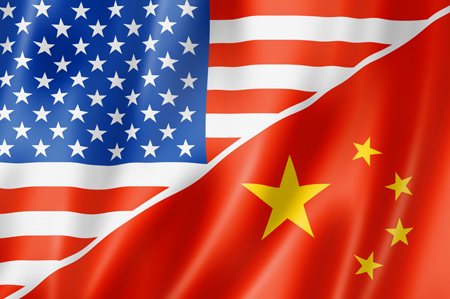Chinese Manufacturing had an Even Worse December than Expected, More Data Show
Category: Trade

(CNBC) – Results of a private survey on China’s manufacturing for the month of December showed factory activity contracted for the first time in 19 months amid a trade dispute with the U.S.
The Caixin/Markit Manufacturing Purchasing Managers’ index (PMI), a private survey, fell to 49.7 in December from 50.2 in November. Analysts’ in a Reuters poll predicted the PMI to come in at 50.1 in December.
A reading above 50 indicates expansion, while a reading below that level signals contraction.
In December, two separate measures for new orders and new export orders showed contraction, the Caixin survey showed.
“That showed external demand remained subdued due to the trade frictions between China and the U.S., while domestic demand weakened more notably,” wrote Zhengsheng Zhong, director of macroeconomic analysis at CEBM Group, a subsidiary of Caixin.
“It is looking increasingly likely that the Chinese economy may come under greater downward pressure,” Zhong added in the press release.
Economic data from the world’s second-largest economy is being closely watched for signs of damage inflicted by the ongoing trade war between Washington and Beijing.
Official manufacturing PMI released on Monday showed a slowdown in activity for the month of December as the sector contracted for the first time in more than two years, dropping below the critical 50 level.
The private survey focuses on small and medium-sized enterprises, while the official PMI gauge focuses on large companies and state-owned enterprises.
The slide in China’s PMI is “worrying” as there will be broader fallout on Asian exporters, said Vishnu Varathan, head of economics and strategy at Mizuho Bank.
Even though China’s manufacturing PMI typically slows ahead of Chinese New Year — starting on February 5 in 2019 — this particular downturn in the sector “could be even sharper than headlines suggest,” Varathan wrote in a note on Wednesday.
He added that the sustained downturn in manufacturing PMI in the second half of 2018 “with emphatic year-end slide” is “potentially symptomatic of far sharper underlying demand pullback. Especially as front-running US tariffs on China fade to reveal much softer demand conditions.”
Indeed, the situation on the ground in China may look worse than any numbers suggest, another analyst told CNBC.
“I do believe, of course, the economy in China is decelerating. I do believe the numbers are worse than reported, of course, in that type of political environment where there’s strong censorship, where media is essentially prevented from reporting,” said Alex Capri, a visiting senior fellow at NUS Business School.
At the beginning of December, U.S. President Donald Trump and Chinese President Xi Jinping agreed to a 90-day ceasefire that delayed the planned U.S. increase of tariffs on $200 billion worth of Chinese goods that were initially due to take effect on Jan. 1, while the two sides negotiated a trade deal.
On Saturday, Trump said on Twitter that he had a “long and very good call” with Xi and that a possible trade deal between the two countries was progressing well.
Yet beyond the tariffs battle, China’s economy has been facing its own domestic headwinds. Even before the escalation in trade tensions with the U.S. this year, Beijing was already trying to manage a slowdown in its economy after three decades of breakneck growth.

